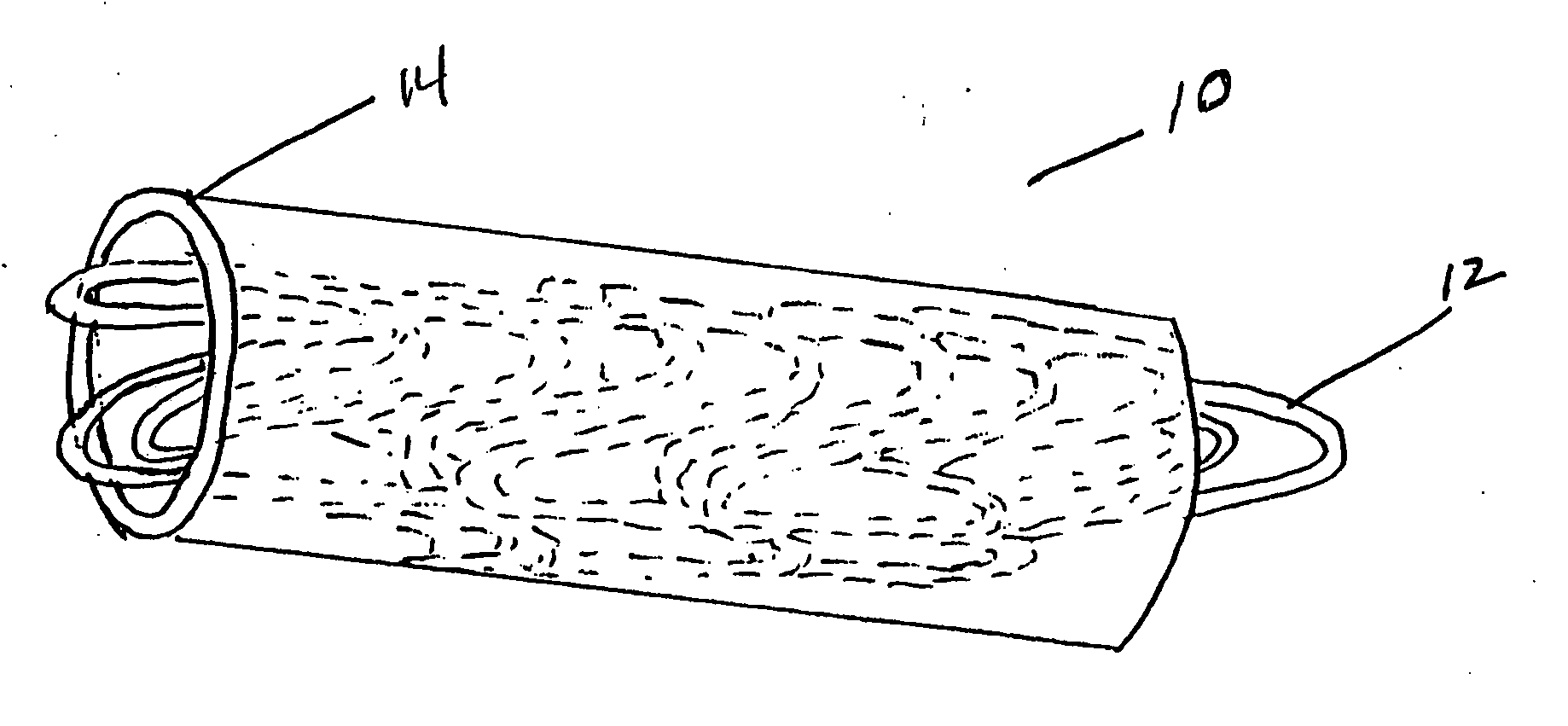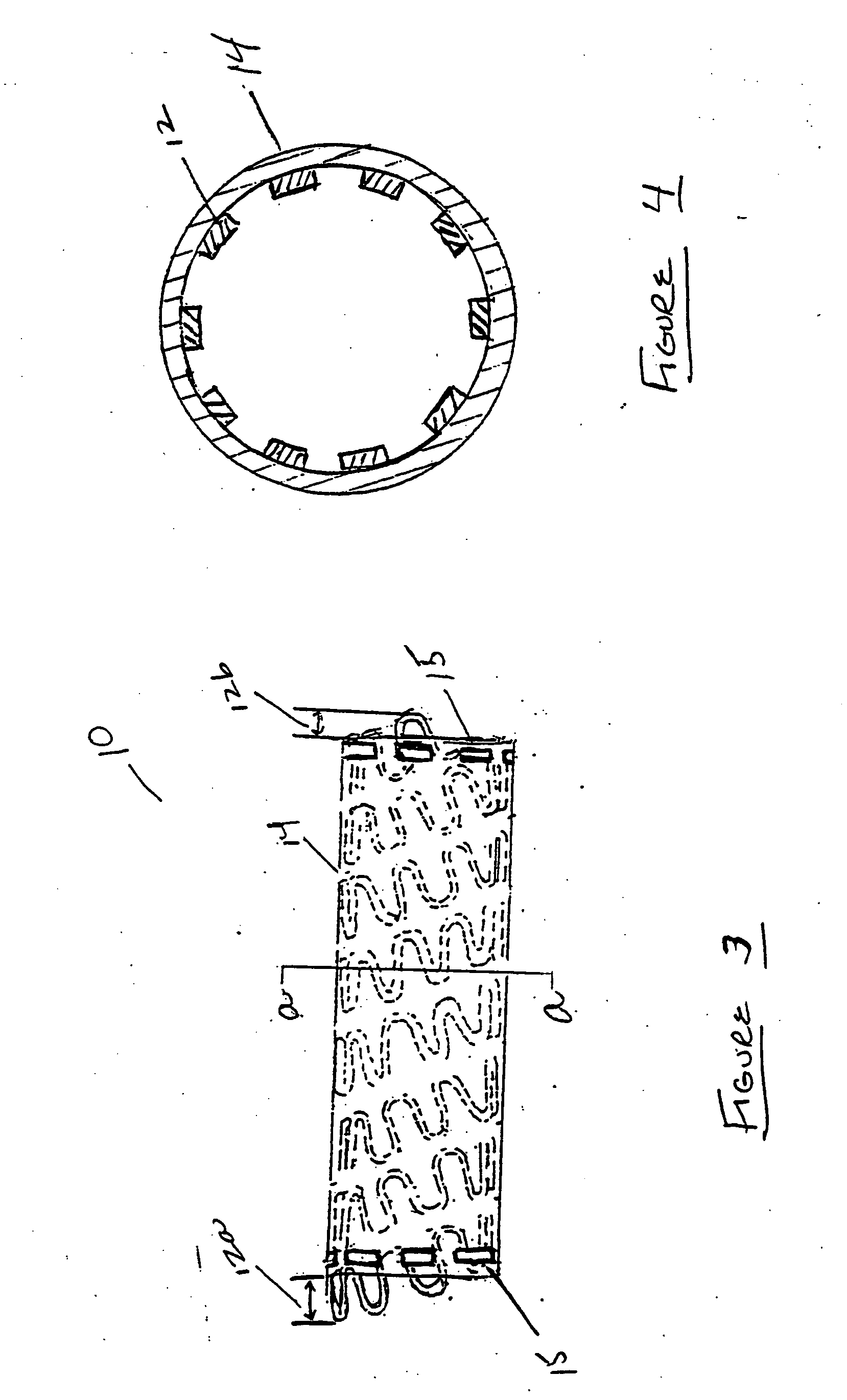Thin-layered endovascular silk-covered stent device and method of manufacture thereof
a silk-covered stent and thin layer technology, applied in the field of tubular implantable prosthesis, can solve the problems of poor compliance, poor performance of synthetic vascular grafts, poor compliance, etc., and achieve the effects of improving tubular stent-graft composite, reducing tissue inflammation, and easy manufacturing
- Summary
- Abstract
- Description
- Claims
- Application Information
AI Technical Summary
Benefits of technology
Problems solved by technology
Method used
Image
Examples
Embodiment Construction
[0042] In the present invention, a tubular stent-graft prosthesis is provided which incorporates a tubular radially adjustable stent having a polymeric covering over an exterior and / or luminal surface thereof. The preferred covering is formed from biological or genetically engineered silk fibers such as those derived from spiders, or from fibers incorporating said silk and a polymeric graft material therein. Silk is a preferred covering because it is very biocompatible, has a smooth surface finish and has natural elastic properties that increase its distensibility over conventional stent-graft materials. The silk is employed as graft material for a stent wherein the material can be applied luminally, externally or laminated to the stent. The covering can either be flush with the ends of the stent or centered mid-stent, allowing a portion of the stent to remain uncovered. The covering can be secured to the stent using sutures, preferably also formed of silk.
[0043] Now referring to t...
PUM
| Property | Measurement | Unit |
|---|---|---|
| Adhesion strength | aaaaa | aaaaa |
| Adhesivity | aaaaa | aaaaa |
| Content | aaaaa | aaaaa |
Abstract
Description
Claims
Application Information
 Login to View More
Login to View More - R&D
- Intellectual Property
- Life Sciences
- Materials
- Tech Scout
- Unparalleled Data Quality
- Higher Quality Content
- 60% Fewer Hallucinations
Browse by: Latest US Patents, China's latest patents, Technical Efficacy Thesaurus, Application Domain, Technology Topic, Popular Technical Reports.
© 2025 PatSnap. All rights reserved.Legal|Privacy policy|Modern Slavery Act Transparency Statement|Sitemap|About US| Contact US: help@patsnap.com



